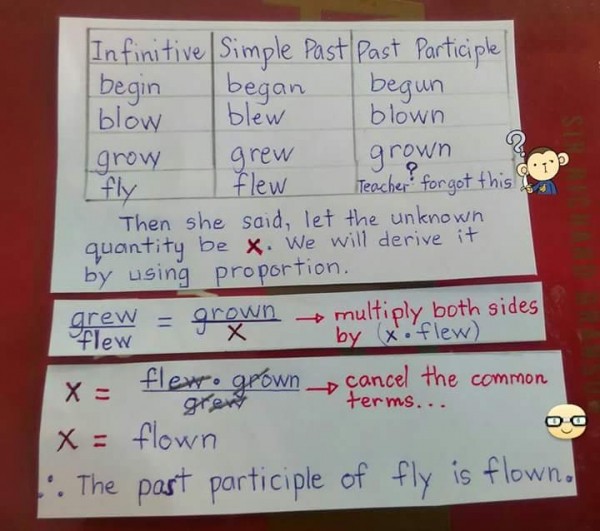
Home Economics lesson note for JSS2 First Term is now available for free. The State and Federal Ministry of Education has recommended unified lesson notes for all secondary schools in Nigeria, in other words, all private secondary schools in Nigeria must operate with the same lesson notes based on the scheme of work for Home Economics.
Home Economics lesson note for JSS2 First Term has been provided in detail here on schoolgist.ng

For prospective school owners, teachers, and assistant teachers, Home Economics lesson note is defined as a guideline that defines the contents and structure of Home Economics as a subject offered at SS level. The lesson note for Home Economics for SS stage maps out in clear terms, how the topics and subtopics for a particular subject, group works and practical, discussions and assessment strategies, tests, and homework ought to be structured in order to fit in perfectly, the approved academic activities for the session.
To further emphasize the importance of this document, the curriculum for Home Economics spells out the complete guide on all academic subjects in theory and practical. It is used to ensure that the learning purposes, aims, and objectives of the subject meant for that class are successfully achieved.
Home Economics Lesson note for JSS2 carries the same aims and objectives but might be portrayed differently based on how it is written or based on how you structure your lesson note. Check how to write lesson notes as this would help make yours unique.
The JSS2 Home Economics lesson note provided here is in line with the current scheme of work hence, would go a long way in not just helping the teachers in carefully breaking down the subject, topics, and subtopics but also, devising more practical ways of achieving the aim and objective of the subject.
The sudden increase in the search for JSS2 Home Economics lesson note for First Term is expected because every term, tutors are in need of a robust lesson note that carries all topics in the curriculum as this would go a long way in preparing students for the West African Secondary Examination.
This post is quite a lengthy one as it provides in full detail, the Home Economics-approved lesson note for all topics and sub-topics in Home Economics as a subject offered in JSS2.
Please note that Home Economics lesson note for JSS2 provided here for First Term is approved by the Ministry of Education based on the scheme of work.
I made it free for tutors, parents, guardians, and students who want to read ahead of what is being taught in class.
JSS2 Home Economics Lesson Note (First Term) 2024
FIRST TERM E-NOTES FOR J.S.S. TWO HOME ECONOMICS
WEEK ONE TO WEEK THIRTEEN
SCHEME OF WORK
| WEEKS | TOPICS |
| 1 | Revision |
| 2 | Myself as a homemaker; definition, qualities and characteristics of homemaker, responsibilities of a home maker |
| 3 | The family house; definition, functional areas in the house |
| 4 | The family house; uses of functional areas in the family house |
| 5 | The family house; equipment and materials for the maintenance of family house; steps and procedures for maintenance of the various functional areas of the family house |
| 6 | Flower arrangement; uses of flower in the functional areas of the family house, types of flower arrangement, |
| 7 | Flower arrangement; arrangement of different shapes of flower for use in the functional areas in the family house |
| 8 | Care of family clothing and household linen; types and uses of household clothing, factors that enhance the selection of household linen |
| 9 | Care of family clothing and household linen; clothing repairs, equipment for clothing repairs |
| 10 | Care of family clothing and household linen; clothing storage, maintenance of household linen. |
| 11 | Revision |
| 12 | Examination |
WEEK: TWO & THREE
TOPIC: MEANING OF A HOME MAKER
A home maker is someone who is responsible for the proper management of the home. A home maker can either be a man or a woman but mostly, a home maker is always a woman. The job of a home maker comes with no salary, benefits or vacation time however; it is one of the most valuable jobs in many families.
Home makers can also be define as women and men who organizes and perform duties of family household. These tasks include child care, cooking, cleaning, e.t.c.
RESPONSIBILITIES OF A HOME MAKER
- He/she is responsible for taking proper care of the home.
- He/she is responsible for taking care of the children.
- He/she is responsible for cleaning the house
- He/she cooks for the family
- He/she serves as role model to the children
- He/she teaches the children good morals
- He/she make sure the children are well behaved.
- He/she is responsible for the general welfare of the family.
QUALITIES OF A HOME MAKER
- He/she must be hard working
- He/she must be patient
- He/she must be tolerant
- He/she must be kind
- He/she must be caring
- He/she must be loving
- He/she must be submissive.
EVALUATION
- Who is an home maker?
- Mention 5 functions of an home maker
WEEK: THREE AND FOUR
TOPIC: THE FAMILY HOUSE
Family house is a place usually a building where family members live together as one. In any family house, there are different rooms or areas. Each room or area is usually used for different purposes or activities or functions. The rooms or areas of the family house that are furnished and used for different functions are called the functional rooms or areas of the house.. The functional areas are:
- Sitting room
- Bedroom
- Dining room
- Kitchen
- Bathroom
- Guest room.
- Pantry/ store.
SITTING ROOM OR LIVING ROOM
Uses
- It is used as a relaxation centre for family members.
- It is used for receiving and entertaining visitors
- Part of it can used as dining area.
- Family pictures and other precious collections can be displayed there
- It can be used for social activities, such as parties, meetings, e.t.c.
Sitting room furniture
- A set of settee or chairs, these are available in different shapes, sizes and forms
- A coffee or centre table
- A set of side stools.
- Wall cabinet or room divider, book shelf.
- Optional items include television, radio, e.t.c. These are not pieces of furniture
- The sitting room also requires floor coverings, curtains and other decorative accessories.
BEDROOM
USES
- It is a place for sleeping or resting
- It is a place for keeping important personal belongings, such as money, documents, clothes, jewellery, e.t.c.
- It is a centre for dressing and making up.
Bedroom furniture
- bed:this can be made with different types of materials.
- Mattress:this can be just foam or foam with spring interior
- Wardrobe or closet:this can be inbuilt r a huge cupboard
- A dressing table:this usually has a mirror mounted on it and a chest of drawers storage
- A stool:this goes with the dressing table
- Bedside cupboard: this can either be a part of the bed stand or a separate unit. It is used for storage.
- we also have bed lines, pillows wardrobe or chests of drawers for clothes.
DINNING ROOM
This is the functional area of the home where the family members eat their meals. It can be a separate room or part of the sitting room.
Uses of dining room
- It is used as a centre for family meals
- It can be used for serving meals to visitors.
Dining room furniture
- Dining table
- Chairs
- Side board or cupboard for storing cutlery, glasses, table mats, linens e.t.c. Drinks and food items, such as, beverages can also stored in the side-board.
KITCHEN
USES
It is used as a centre for
- food storage
- food preparation and cooking
- meal service
Kitchen Furniture
- Gas cooker
- Storage cupboard with shelves
- Sink with draining board
- Kitchen taps fitted to the sink
- Refrigerator and deep freezer where they can be afforded
- Pestle and mortar, cooking pots and pans e.t.c.
BATHROOM AND TOILET
Uses
- Bathroom is a place where family members have their bath
- It is also used for cleaning up
- Toilet is used to pass away faeces.
Bathrooms and toilet furniture
- Bathtub with hot and cold water taps
- A shower
- A water closet
EVALUATION:
- Mention the functional areas in the family house
- Differentiate btw living room and sitting room
- Mention the functions of the bedroom and sitting room
ASSIGNMENT:
Draw types of kitchen layout.
WEEK: FIVE
TOPIC: MAINTENANCE OF THE FAMILY HOUSE
MATERIALS NEEDED FOR HOUSEHOLD MAINTENANCE
- Broom
- Brushes
- Dusters
- Mops
- Dust pans
- Dust bins
- Pails
- Buckets
- Carpet sweeper
- Vacuum cleaner.
GUIDELINES FOR HOUSEHOLD MAINTENANCE
SUB-TOPIC: GENERAL GUIDELINES FOR HOUSEHOLD MAINTENANCE
- Always set apart sometimes for daily, weekly and seasonal cleaning of the house.
- Use the correct house cleaning materials or agents for specific surfaces e.g. abrasives like vim for scouring bath tubes.
- Use house and vacuum cleaning equipment such as mops, brooms cleaners properly.
- Store house cleaning equipment and materials properly and out of reach of children.
- Each surface or object should be given the correct cleaning treatment.
- Household waste should be properly dispose off on daily basis.
- Always clean the surrounding of the houses clean by cutting the hedge and grasses and bay not allowing stagnant waters around the house/
DAILY CLEANING OF SITTING ROOM
- Open the doors and windows to air the room.
- Sweep the floor and reach under all pieces of furniture.
- Empty the waste paper basket.
- Dust all surfaces, doors, windows and furniture.
- Tidy up the cushions and arrange arm and head rests on the chairs.
- Arrange furniture, newspaper, magazines and other items properly.
- Put fresh flowers in the vase if necessary.
DAILY CLEANING OF DINING ROOM
- Clean the table and remove any pieces of food.
- Clean the table- mat and put them away.
- Clean the table, dirty tables attracts flies.
- Sweep off the pieces of food on the floor.
- Dust the chairs and other pieces of furniture.
- Arrange the chairs neatly.
- Put fresh flowers.
DAILY CLEANING OF KITCHEN
- Open the windows to air the room.
- Sweep down cobwebs and dust from ceiling and walls.
- Sweep the floor.
- Wash any dirty plates and utensils.
- Clean the sinks, draining board and the wall around it.
- Wipe the stove or cooker.
- Dust other surface in the kitchen e.g. cabinet, table, refrigerator.
- Mop the floor.
- Arrange the utensils.
- Empty the dust bin or waste basket.
- Sweep out the inside of the bin or basket using a stiff broom or brush.
- Clean the broom or brush and put away properly.
DAILY CLEANING OF BATHROOM & TOILET
- Sweep the floor with special broom.
- Flush the toilet.
- Remove debris, including bits of sponge.
- Draw the shower curtain if in use.
- Wash the bath tub and wash hand basin.
- After each use, rinse the bath tub and mop up any water splashes on the floor.
- Lift the seat of the W/C and sprinkle toilet cleaner such as “Harpic” inside the bowl.
- Scrub the bowl with toilet brush, flush again.
- Wipe the outside of the bowl, seat and cover using a suitable cloth.
- Mop the floor.
- Supply fresh toilet paper if necessary.
DAILY CLEANING OF THE BEDROOM
- Open the windows and draw the curtains to air the room.
- Take up mosquito net and adjust it neatly, if it is in use.
- Dust the bedroom furniture.
- Sweep the floor and brush the floor covering.
- Make the bed.
- Arrange the dressing table.
- Clean the duster and put away neatly.
EVALUATION:
- Mention 5 guidelines for cleaning the family house.
- Describe the weekly cleaning of the sitting room
ASSIGNMENT:
Draw and state the uses of 5 home cleaning equipments
WEEK: SIX AND SEVEN
TOPIC: FLOWER ARRANGEMENT
USES OF FLOWER IN THE FUNCTIONAL AREAS OF THE HOME
- Flowers add beauty to the room and also provide a pleasing atmosphere
- Flowers give soothing effect to the room
- Flowers give sweet fragrance all the time
- Flowers are pleasing to the eyes, refresh our body and mind
- Flowers do not only create aesthetic sense but spruce up the place they are used at.
- Flowers cheer up the emotions and express love for every member of the family.
SOME COMMON FLOWERS
Hibiscus
Pride of Barbados
Marigold
Bougainvillea
Lilies
Rose
Alamanda
Chrysanthemum
Queen of the night
Bachelor’s buttons
Zinnia
Forget-me-not
TYPES OF FLOWER ARRANGEMENT
There are different types of flower arrangements, which are suitable for different places and occasions. Some of them are:
- Horizontal arrangement for dining and ceremonial high tables
- Oral arrangements for large space
- Crescent arrangement for dining tables
- Circular arrangement for large space
- Vertical arrangement for narrow space
- Triangular arrangement for centre of table.
MATERIALS NEEDED FOR FLOWER ARRANGEMENT
- Flowers
- Flower vases
- Pair of scissors or sharp knife
- Water
- Flower holder e.g. pin holders, small pebbles, floral foam
- Little sugar.
ASSIGNMENT:
Draw and label 6 types of flower arrangement.
WEEK: EIGHT
TOPIC: CARE OF FAMILY CLOTHING AND HOUSEHOLD LINEN
Household linen is a term used collectively to include a variety of textile articles used in the home. A good supply of household linen is a very necessary item in the home; they are expensive and require good care.
TYPES OF HOUSEHOLD LINEN AND THEIR USES
- CURTAINS AND DRAPERIES: These are fabrics or materials used for decorating our doors and windows. Curtains can be light or heavy, opaque or transparent.
Uses of Curtains and Draperies
- They shade the room from excessive light and wind.
- They beautify the room by adding colour to it.
- They provide privacy for family.
- They establish the character and mood of a room.
- BED LINEN: Includes all the different types of fabrics materials used to make the bed. They are:
- Mattress covers used for covering the mattress in order to protect it from dust and dirt
- Bed sheets used for making the bed
- Pillow cases used for covering the pillows
- Bed spreads used as spread over a made bed and as a covering for the person lying on the bed
- Blankets used as covering for warmth in cold nights.
- TABLE LINEN: refers to all clothes and mats used on the table. They include;
- Table clothes used for covering the table
- Place mats used on the table for setting cover. The cover refers to the place set for one person on the dining table.
- Table napkins used during meals for protecting your dress and for wiping the mouth and hands
- Tea clothes used for wiping or cleaning the table.
- BATHROOM LINEN: they are made up of
- Bath-towels used for wiping the dry after bath
- Face-towels; these are smaller than bath towels and they are used for cleaning the face.
- KITCHEN LINEN
- Hand towels used for wiping and drying hands
- Oven gloves or cloths; they are often padded and used for taking out hot pans and dishes from the oven or top of the cooker.
- Dish clothes are non-fluffy clothes used for wiping off spills on kitchen surfaces
- Glass cloth for blotting off water or moisture from vegetables and fruits
- Muslim; this is a light loosely woven fabric used for straining during food preparation e.g in the preparation of starch or coconut milk or soya milk.
- Tea towels; used for blotting off water or moisture from vegetables and fruits and wiping glass-wares, crockery and cutlery
FACTORS THAT INFLUENCE THE SELECTION OF HOUSEHOLD LINEN
The following points are to be considered when selecting household linen
- What the linen is to use for
- The type of fabric
- Durability of the fabric
- Size of the bed and pillows should be considered when choosing bed sheets, mattress covers e.t.c.
- All types of towels should be soft and absorbent
- Household linen should be colour-fast
- The needs of the family
- The size of the family
- Money available.
EVALUATION:
- Mention 5 factors to consider when choosing household linen.
- State 5 kitchen linen and their uses.
WEEK: NINE
TOPIC: CARE OF FAMILY CLOTHING AND HOUSEHOLD LINEN
SUB-TOPIC: CLOTHIING REPAIRS
Garments repair involves two methods. They are darning and patching.
DARNING: Darning is a method of repairing or mending thin pieces and small holes in garments. This process involves weaving strong thread into the material to replace or strengthen worn threads. Darning can be done with machines or by hand.
STEPS TO FOLLOW WHEN USING DARNING
- Choose thread which matches the fabric in terms of colour, thickness and texture
- Work darn on wrong side of the fabric
- Use fine darning needle
- Draw the edges of the tear together with herringbone stitch
- Darn along the selvedge first
- Leave loops at the ends of each other row to allow for shrinkage
- Sew round the hole and over the thin areas.
TYPES OF DARNING
- Darning a hole/tear
- Stocking dams
- Hedge tear darn
PATCHING: Patching is a method of replacing worn areas of fabric with strong pieces of materials. It will look better when materials of the same colours, designs and texture are used for the patch and matching colours of the thread. The patch can be cut into squares, rectangle or triangles. Patchwork can be used on all soft furnishing. The patch should be large enough to cover the hole, selvedge threads should matched with selvedge threads and weft to weft.
TYPES OF PATCHING
Calico patch
Print patch
Woven patch
EVALUATION:
- Mention the types of cloth repairs
- State types of patching
ASSIGNMENT
Get a piece of fabric and calico pieces, prepare and present a calico patch
WEEK: TEN
TOPIC: CARE OF FAMILY CLOTHING AND HOUSEHOLD LINEN
SUB-TOPIC: CLOTHIING STORAGE
METHODS OF STORING FAMILY CLOTHING
Family clothing can be stored in the following storage spaces:
- A wardrobe or closet
- A box, suitcase, bags
- A chest of drawers or shelves.
WARDROBE OR CLOSET
Storing clothes in the wardrobe with the use of good quality plastic hangers is the best method of storing clothes. Some wardrobe units consist of a section for hanging clothes, a section with shelves for folded clothes, the bottom part for shoes, the top having fitted doors for storing suit cases and boxes. Wardrobes prevent clothes from creasing and help them to maintain their original shape.
GUIDELINES FOR STORING CLOTHES IN WARDROBE/CLOSET
- Keep the wardrobe clean regularly and away from ants, cockroaches and house hold pests
- Put camphor balls on the wardrobe to keep away cockroaches and ants
- Use good quality hangers to hang clothes. Do not use metal or iron made hangers
- Do not overcrowd the wardrobe with clothes
- Hang similar items together in a place for easy identification
- Keep clothes in the wardrobe according to the fabric types for example woollen materials can be folded inside the shelves/drawers. Thick fabric clothes e.g. skirts, trousers can be hanged from the waist band. Suits can be hanged to prevent them from being rumpled
- Keep the wardrobe away from dust but save the clothes from dust and dirt by covering them with white water proof bags
- Air and brush the clothes always to prevent mould and dust
- Iron the clothes before storing them in the wardrobe.
BOXES/SUITCASES/BAGS
Good quality boxes, suitcases and bags can be used to store clothes. Do not select boxes, bags made from metal or easy to peel fabrics for storing your clothes, else they will leave permanent marks or stains on the clothes.
GUIDELINES FOR STORING CLOTHES IN BOXES/SUITCASES/BAGS
- Store only clean clothes
- Iron the clothe properly before storing them in the box
- Fold properly the ones that are not ironed before storing them in the bag or suitcases
- Keep the box, bag or suitcase clean
- Close the bag or suitcase properly to prevent dust
- Put some camphor balls in the box, suitcase and bags to keep away insects.
DRAWERS OR SHELVES.
Constructed drawers and shelves made with suitable wood and highly finished can be used to store clothes
GUIDELINES FOR STORING CLOTHES IN DRAWERS OR SHELVES.
- Store only clean clothes
- Iron the clothes before storing
- Fold and arrange the clothes properly inside drawers and shelves
- Arrange the clothes according to their use for easy location
- Put some camphor balls inside the drawers and shelves to keep away insects.
ACCESSORIES: Accessories are items worn by everyone apart from clothes to complete one are dressing. Examples are shoes, handbags, jewelry, hat , make ups, scarf etc.
Shoes are articles we put on our feet to protect them from dirt.
Care Of Shoes
- Clean your shoes immediately after each use
- Repair your shoes as soon as they cut
- Stuff your shoes with clean old newspaper or shoe trees to keep them in shape
- Arrange them on shoe rack or shelf.
Jewellery: Jewellery are earrings, necklaces, rings, broaches, bangles etc. that we put on.
Care Of Jewellery
- Get a small suitable box or container with cover lined with soft cloth or wool for storage of jewellery
- Arrange the jewellery properly in the box or container
- Keep the box closed always to avoid dust and rusting
- Keep jewellery away from liquid e.g. water, kerosene
- Clean jewellery according to type e.g. gold, silver, when dirty.
GENERAL PROCEDURES FOR MAINTAINING HOUSEHOLD LINEN
- Dirty or soiled linen such as bed sheets should be kept in a covered basket or laundry bag until they are laundered
- Some linen such as napkins and floor clothes should be washed immediately after each use
- Care must be taken to remove all stains during washing process
- Washed linen should be properly ironed and aired
- Fold the aired linen properly
- Heavy linen such as bed sheets should be stored in dry airy shelves in a cupboard. Storage cupboard should be strong
- Small light articles, such s tea clothes, napkins, place mats may be kept in drawers.
- Cover stored linen with Mushin or other suitable material to prevent dust from settling on them.
- Similar articles e.g. sheets, pillow cases, towels e.t.c. should be kept together
- Mend the linen as soon as a tear is noticed. Linen should not be stored in a fray or torn condition.
- Keep linen in good repair as long as possible.
EVALUATION:
- State 5 guidelines for storing clothes in the wardrobe
- State three methods/ types of clothes storage.
- State 5 procedures for maintaining household linen
ASSIGNMENT:
Using flowery materials, prepare a table cover for a standard dining table.
WEEK: ELEVEN: REVISION
WEEK: TWELVE: EXAMINATION.
Hope you got what you visited this page for? The above is the lesson note for Home Economics for JSS2 class. However, you can download the free PDF file for record purposes.
If you have any questions as regards Home Economics lesson note For JSS2 class, kindly send them to us via the comment section below and we shall respond accordingly as usual.



